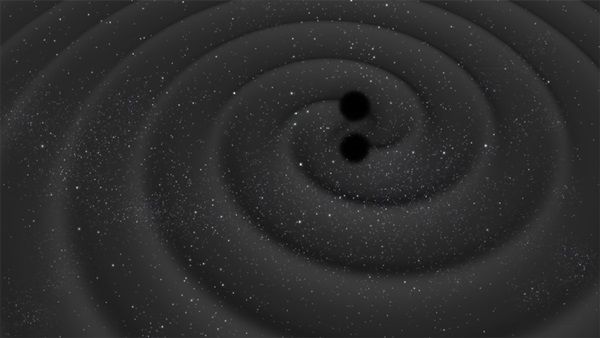Key Takeaways:
Detecting Gravitational Waves
Scientists have announced the detection of four new gravitational-wave events, bringing the total to 11. With the first captured by the Laser Interferometer Gravitational-Wave Observatory (LIGO) detectors in 2015, the new observations of ripples in the fabric of space-time are quickly adding up and helping researchers to better understand powerful and distant cosmic phenomena like black holes and neutron stars.
The US-based LIGO and the European-based Virgo detectors have now detected gravitational waves from a total of 10 stellar-mass binary black hole mergers and one merger of neutron stars, which are the collapsed cores of giant stars.
The highlight of the new detections is a black hole merger from about 5 billion years ago that is the most massive and distant gravitational-wave source scientists have ever seen. This merger created a black hole 80 times more massive than the Sun and released an amount of gravitational energy equivalent to 5 solar masses when it occurred.
“Gravitational waves give us unprecedented insight into the population and properties of black holes. We now have a sharper picture of both how frequently stellar mass binary black holes merge and what their masses are. These measurements will further enable us to understand how the most massive stars of our universe are born, live, and die,” said Northwestern University’s Chris Pankow, who co-chairs the LIGO Scientific and Virgo Collaboration’s Compact Binary Coalescence Rates and Populations subgroup, in a statement.
Future Implications
Thanks to these new detections, scientists have enough data to infer that nearly all stellar-mass black holes weigh less than 45 times the mass of the Sun. This work also shows how it’s possible that more binary black hole mergers occurred earlier in the universe, Pankow told Discover magazine.
While these detections reveal information about black holes, they also open doors to future research, Pankow explained. With these 11 new events, researchers now have a wealth of new data and opportunities to explore gravitational waves and the events that create them.
In the past, our current understanding of black holes was supported by observations with X-rays, optical light, and radio waves. These methods have contributed immensely to astronomy and astrophysics. However, Pankow added, gravitational waves allow us to study and understand binary black holes in a way that can’t be done with other measures. “That’s allowed for testing our understanding of what gravity really means,” Pankow said, adding that the researchers could also use these detections to better understand how stars evolve and die.
These findings are described in two papers available on arXiv, which houses electronic preprints of papers before peer-reviewed publication. The papers can be found here and here.











